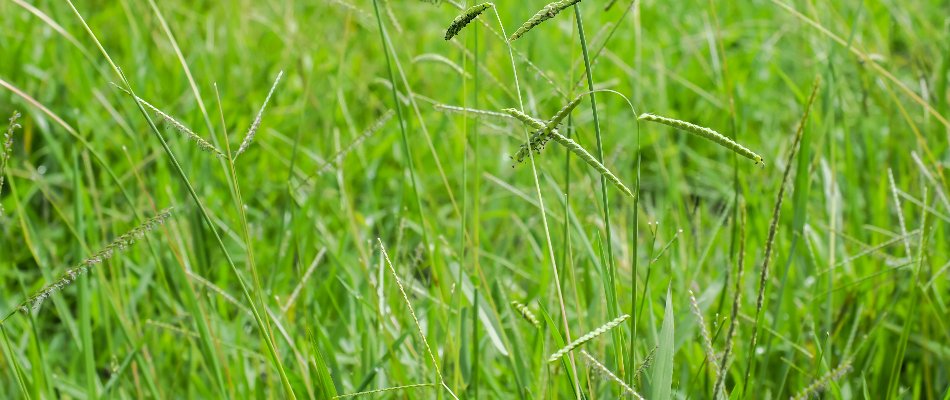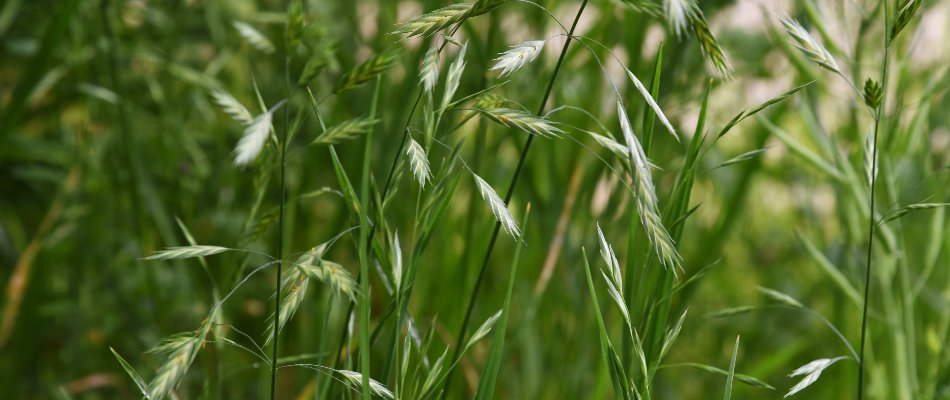Weeds spell trouble for your lawn, marring its uniform appearance and stealing its nutrients. However, grassy weeds can be difficult to distinguish from regular grass, with two common types in Texas being dallisgrass and rescuegrass. Dallisgrass is a perennial weed that grows in clumps and can be identified by its coarse, wide leaves and tall seed heads. Rescuegrass, on the other hand, is an annual weed that has long, narrow leaves and produces flat seed heads. Both weeds can be controlled through pre- and post-emergent weed control treatments. It's important to note that these weeds differ from regular grass, which is typically more uniform in appearance and lacks the distinctive characteristics of dallisgrass and rescuegrass.
Dallisgrass is a perennial weed that grows in clumps and has coarse, wide leaves.

Dallisgrass is a common weed that can be found in lawns. It is a perennial weed, meaning it lives for more than two years and can be difficult to control. Dallisgrass grows in clumps and has coarse, wide leaves. The leaves are also hairy and have a rough texture, which can make them stand out from other grasses. Dallisgrass also produces tall seed heads that can make it easy to identify.
One of the most effective ways to control dallisgrass is through the use of herbicides. Pre-emergent weed control helps prevent newly germinated weeds from surfacing by creating a barrier in the soil. Meanwhile, post-emergent treatments specifically target existing growth, which are applied directly onto it to eliminate it at the roots.
Rescuegrass is an annual weed that has long, narrow leaves.

Rescuegrass is another common weed that can be difficult to identify among regular grass. It is an annual weed, meaning it completes its life cycle in one year. Rescuegrass grows in clumps and has long, narrow leaves that are light green in color. The leaves are also smooth, and it produces flat seed heads with a distinctive braid pattern.
While you can use hand-pulling methods to control rescuegrass, the most effective method is weed control treatments. You'll want to utilize both pre- and post-emergent treatments to combat this weed at both ends of its life cycle. However, it is important to read the label on the herbicide carefully and follow the instructions to ensure that it is applied correctly and safely.
Regular grass is uniform in appearance and lacks the characteristics of dallisgrass and rescuegrass.
It's important to distinguish regular grass from dallisgrass and rescuegrass to ensure these weeds don't cause issues for your lawn. Regular grass is typically more uniform in appearance and lacks the distinctive characteristics that make these weeds stand out. Regular grass is usually a shade of green that is somewhere between light and dark, depending on the type, and has a smooth texture. It also typically grows evenly across your lawn rather than having a bunch-forming habit. By keeping an eye out for troublesome weeds like dallisgrass and rescuegrass and staying on top of their control, you can maintain a healthy, thriving turf!
Give us a call today to schedule our weed control service.
Keep your lawn weed-free year-round with our professional weed control service! At Dr. Tex Lawn & Pest, we utilize both pre- and post-emergent weed control treatments to prevent new weeds from sprouting and eliminate any existing growth. What's more, these treatments are effective against common weeds like dallisgrass and rescuegrass, among others.
We offer our weed control service to residential and commercial property owners, along with HOAs, in Austin, TX, and nearby areas like Round Rock, Cedar Park, and Pflugerville. Give us a call today at (512) 717-5071 to schedule.



Comments (0)
Thanks for your comment!
Thanks for your feedback! Your comments have been successfully submitted! Please note, all comments require admin approval prior to display.
Error submitting comment!
There is a problem with your comment, please see below and try again.